
Urban Living
Living in a dense city
Densification is the antidote to urban sprawl and to over-consumption of the territory, but how to live in the dense city, how can it be made pleasant to live in and desirable? The necessity to contain city growth offers the opportunity to imagine new types of dwellings: collective, to preserve land, but offering a feeling of independence and freedom of use of both inner and exterior spaces.
The issue of densification requires different answers that vary according to the urban situations. Berlin is a very green city. Vegetation is everywhere. The project’s site is located in a peripheral district where nature’s presence is strongly felt: parks, gardens, lakes, forests, etc. It is a low-density district made up of 1930s villas and small collective buildings. The densification must preserve and reinforce the particularly pleasant quality of life.
The villa-building we propose is based on the archetype of the house as a microcosm assuring the mediation with the macrocosm. It creates a common universe in a diversified whole: what vernacular architecture has succeeded in producing over the years. It’s a compact pattern that shows the utmost concern to the continuum between inside and outside, so as to live in the city as in a house and feel nature’s rhythms.
Our project is a vertical housing system which defines above-ground individual territories as an alternative to the classic private housing estate. It sets up a combination of different size “villas” contained inside a parallelepiped with an efficient shape coefficient and dimensions similar to that of the surrounding collective buildings. The other part is dedicated to the exterior extensions, terraces and hanging gardens, that create a vertical landscape. The “villas” are accessible through exterior passageways connected by 2 stairs and 1 or 2 lifts.
Each accommodation has certain features of the individual house: vast exterior extensions allowing various types of appropriation (vegetable garden, pergola, lunch in the sun…), direct access from outside, individual and flexible-use “garden shed”, possibility to reach one’s front door by bike, etc.



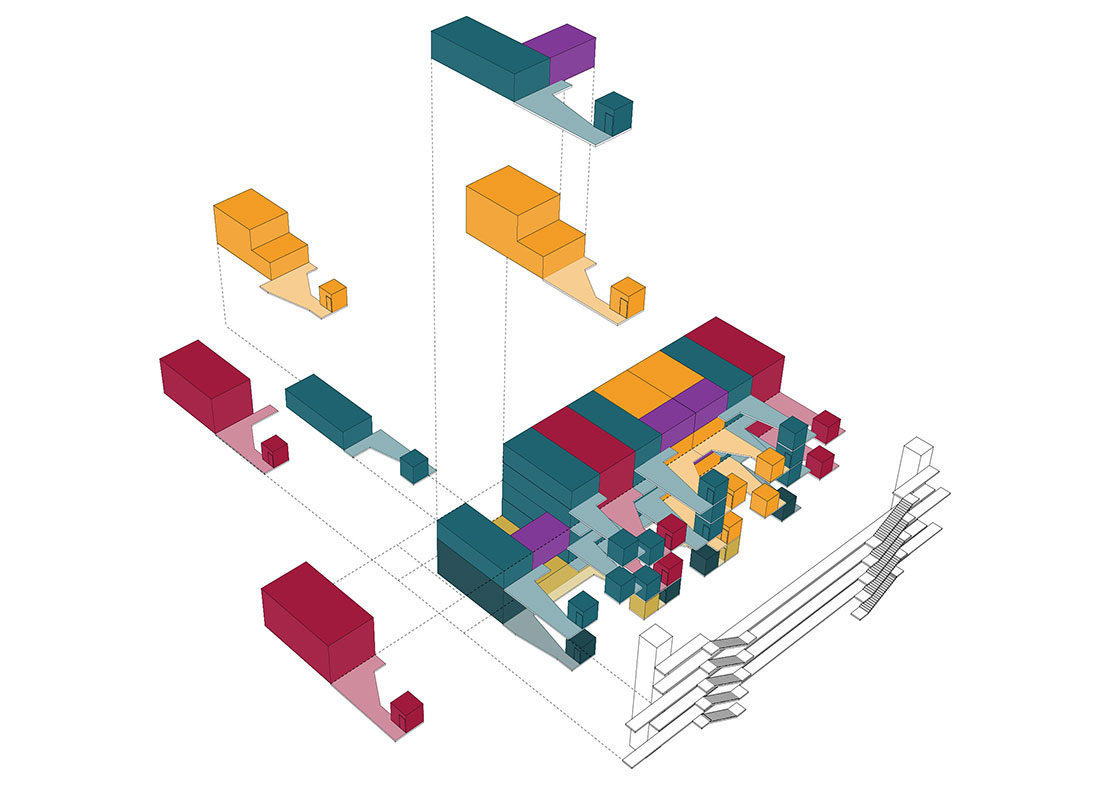
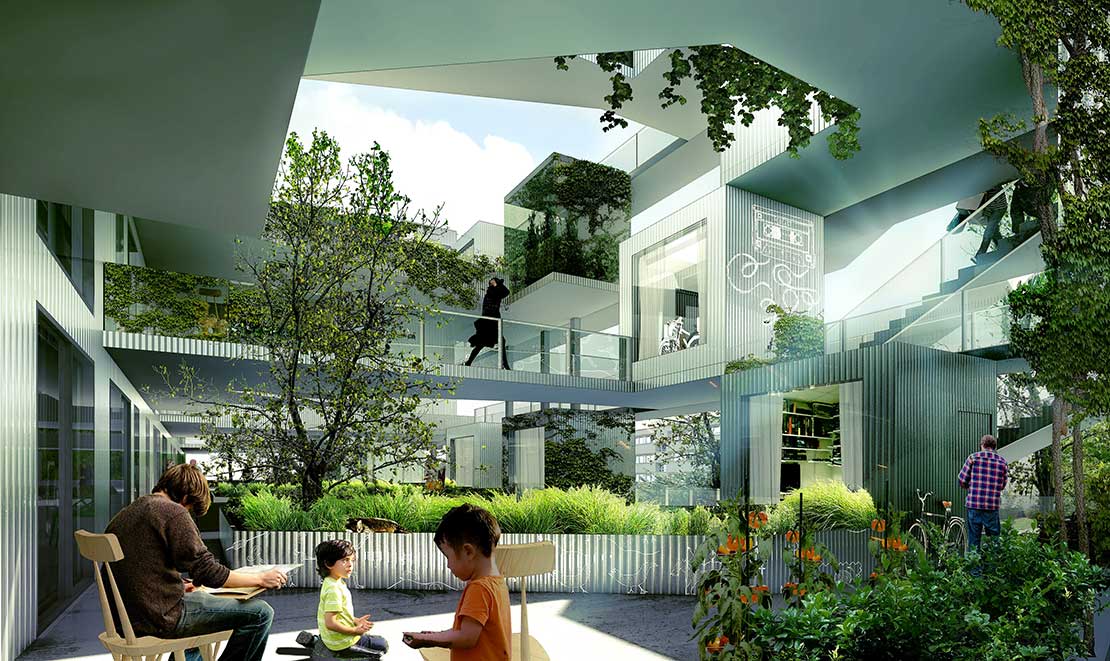
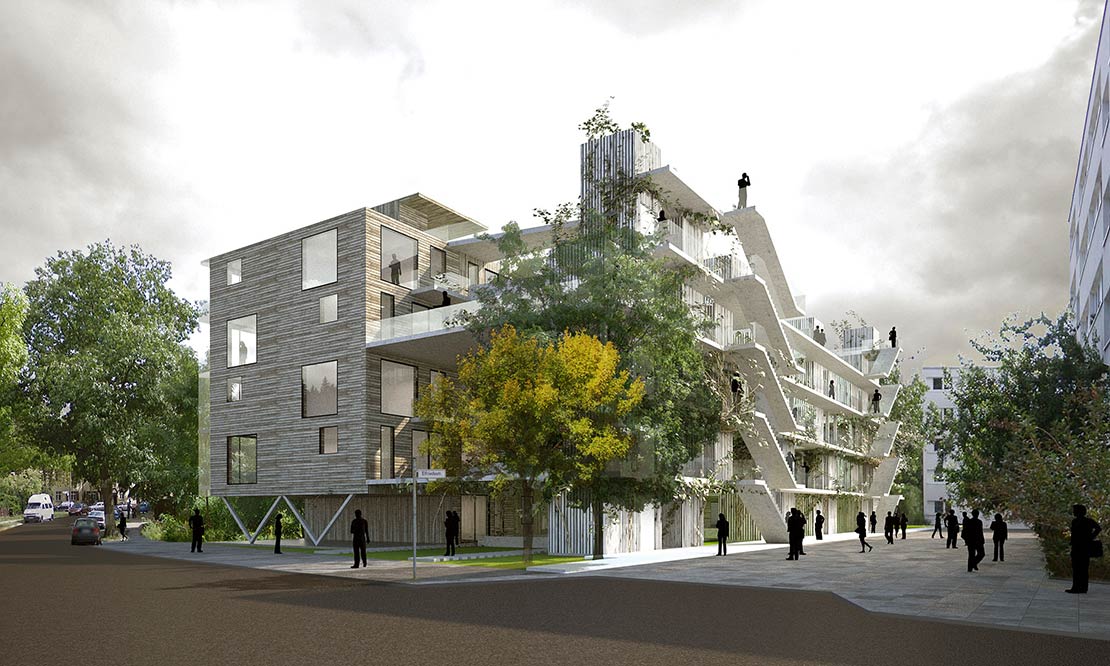
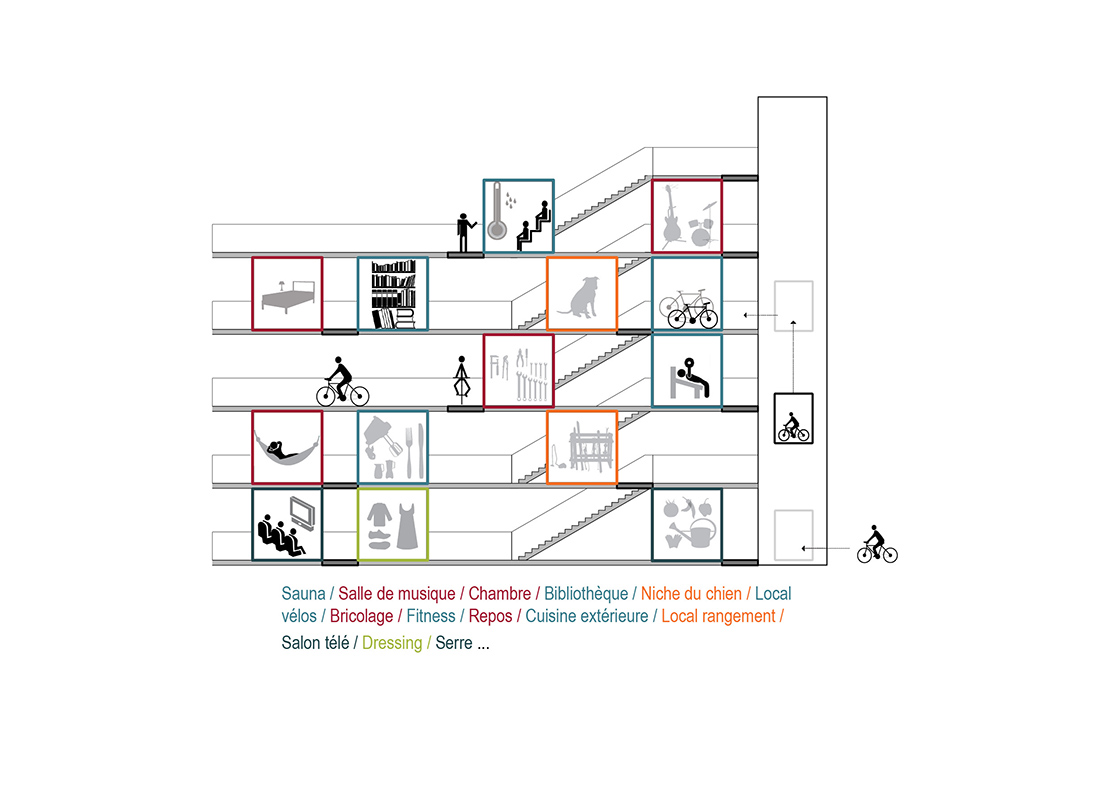
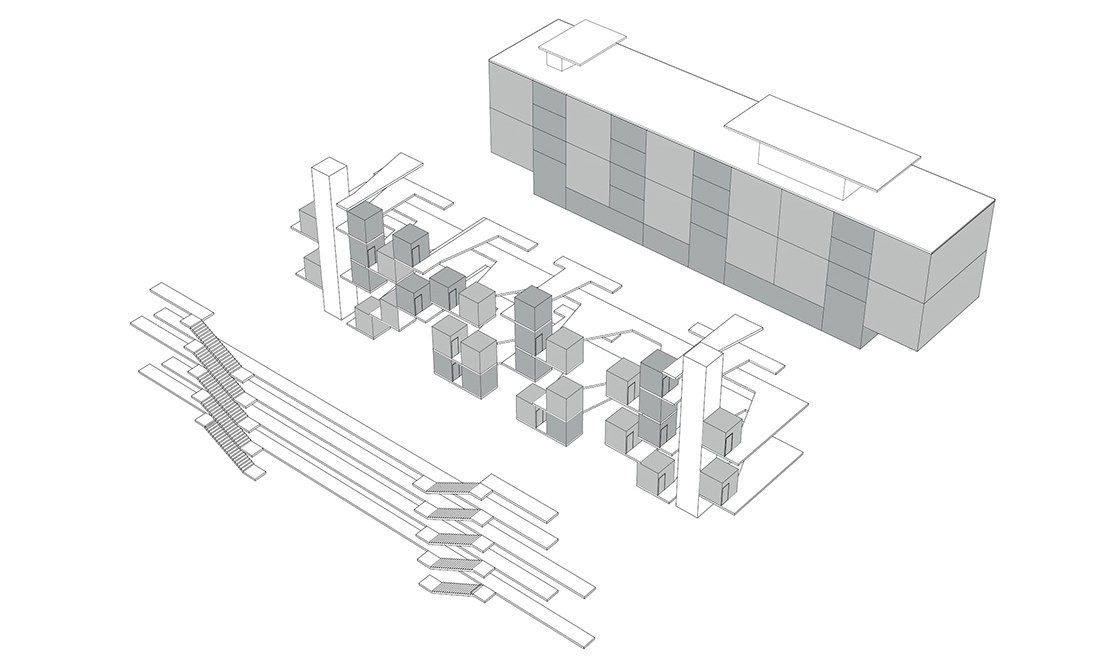


Location
Elsastrasse – Berlin
Client
Berlin city
Surface
5,252 sqm
Project Team
Hérault Arnod Architectures, design and project supervisor
Paola Figueroa and Pauline Marie d’Avigneau, project manager
Schedule
Selection august 2013
Project delivered 2013
Symposium, exhibition and book publication february/april 2014
Program
36 apartments with huts and suspended terraces
Common hall
Laundry
Images
Labtop-rendering
Hérault Arnod Architectures


